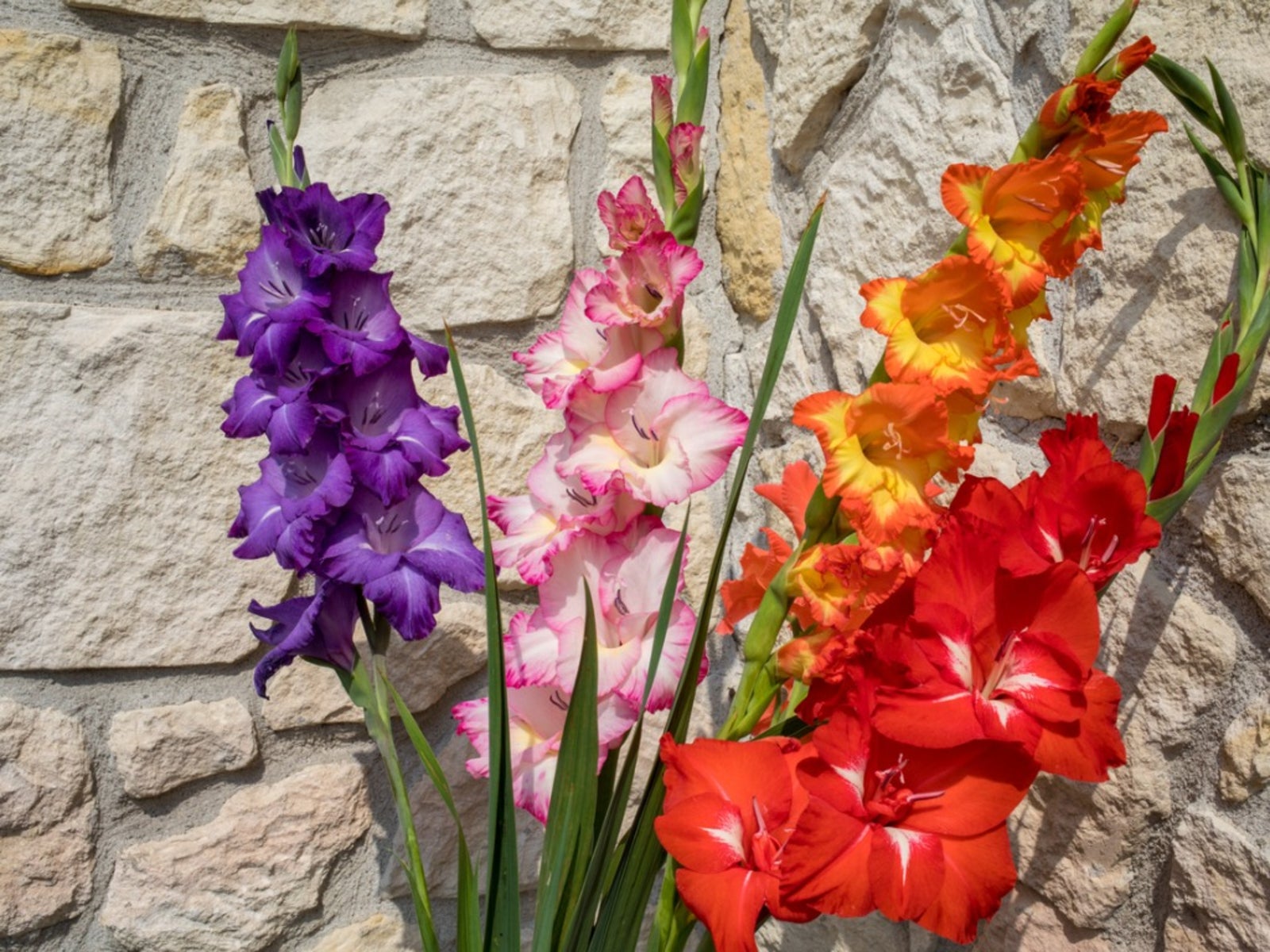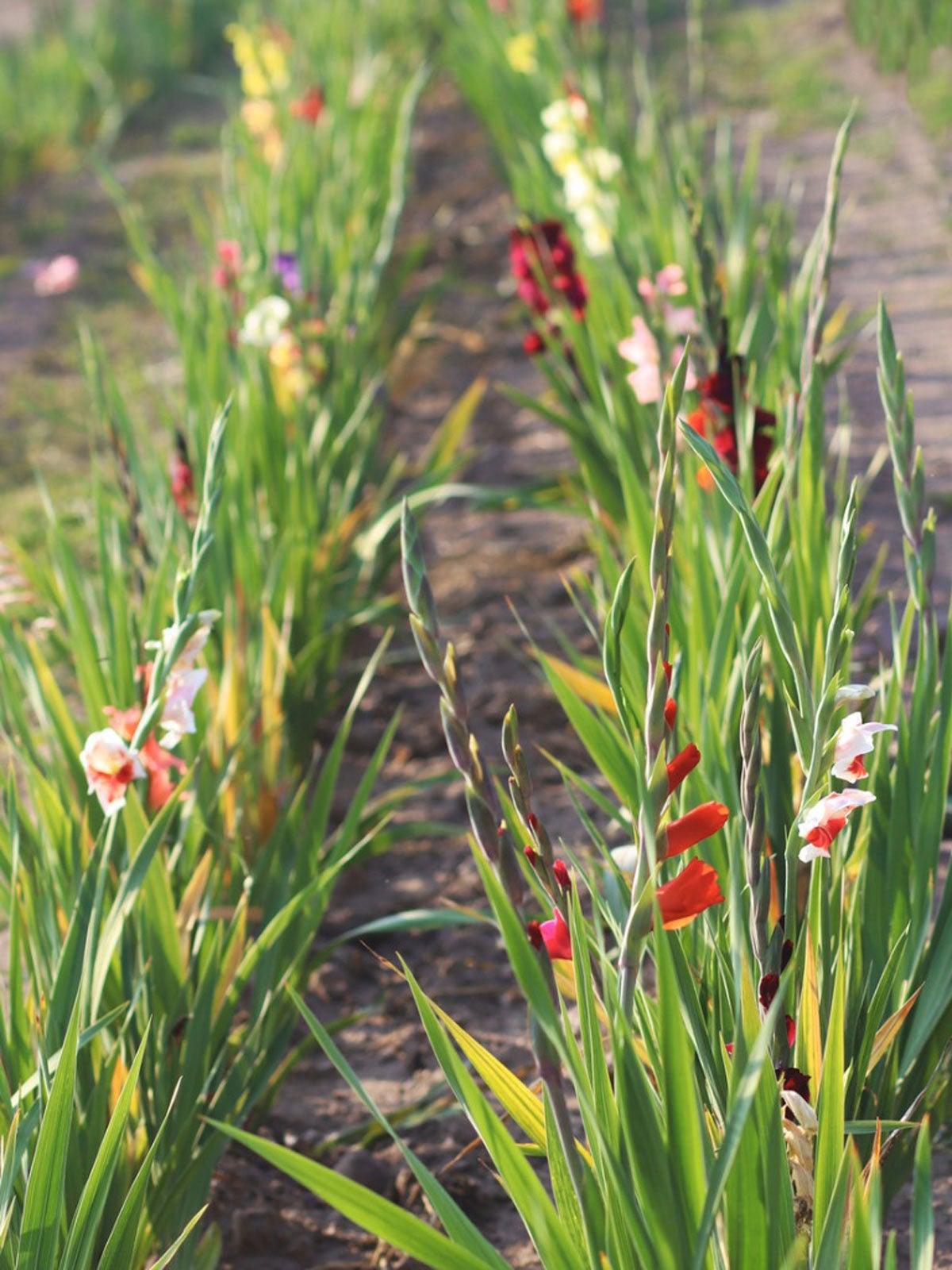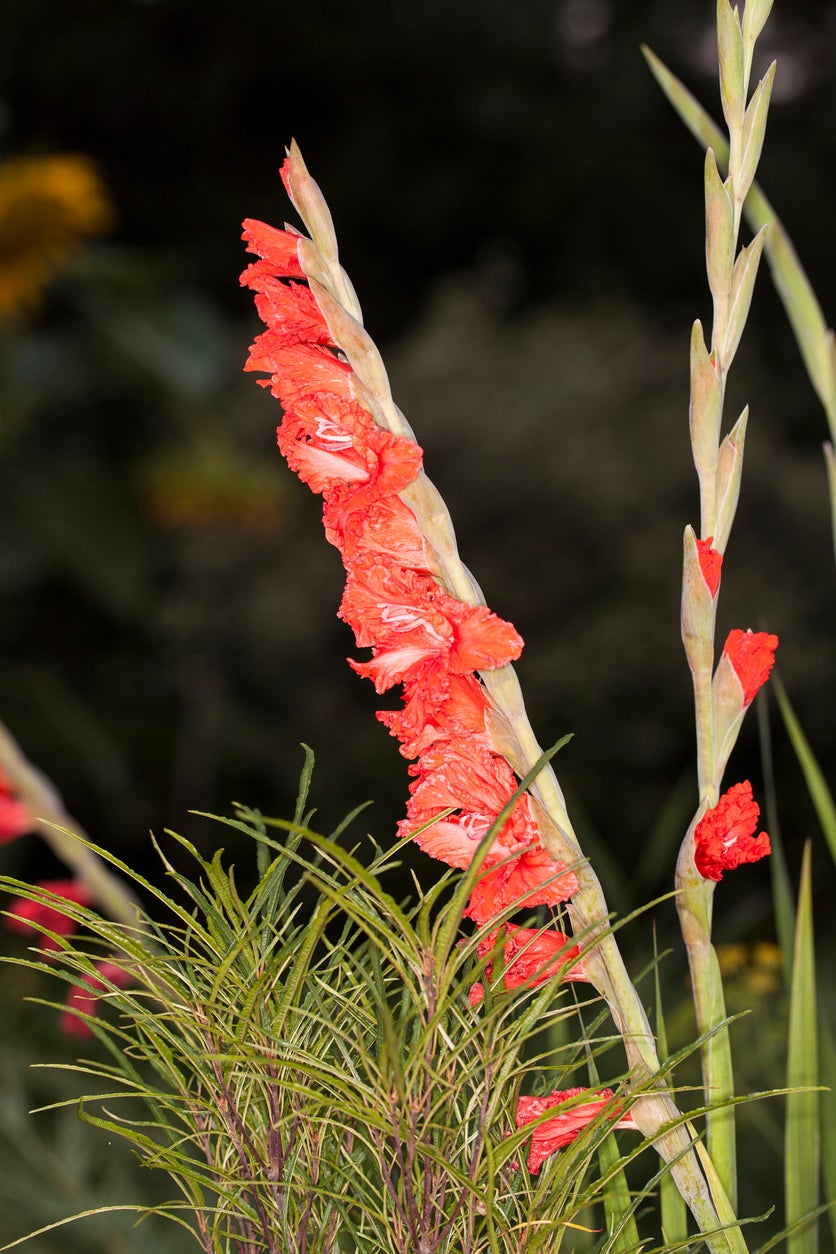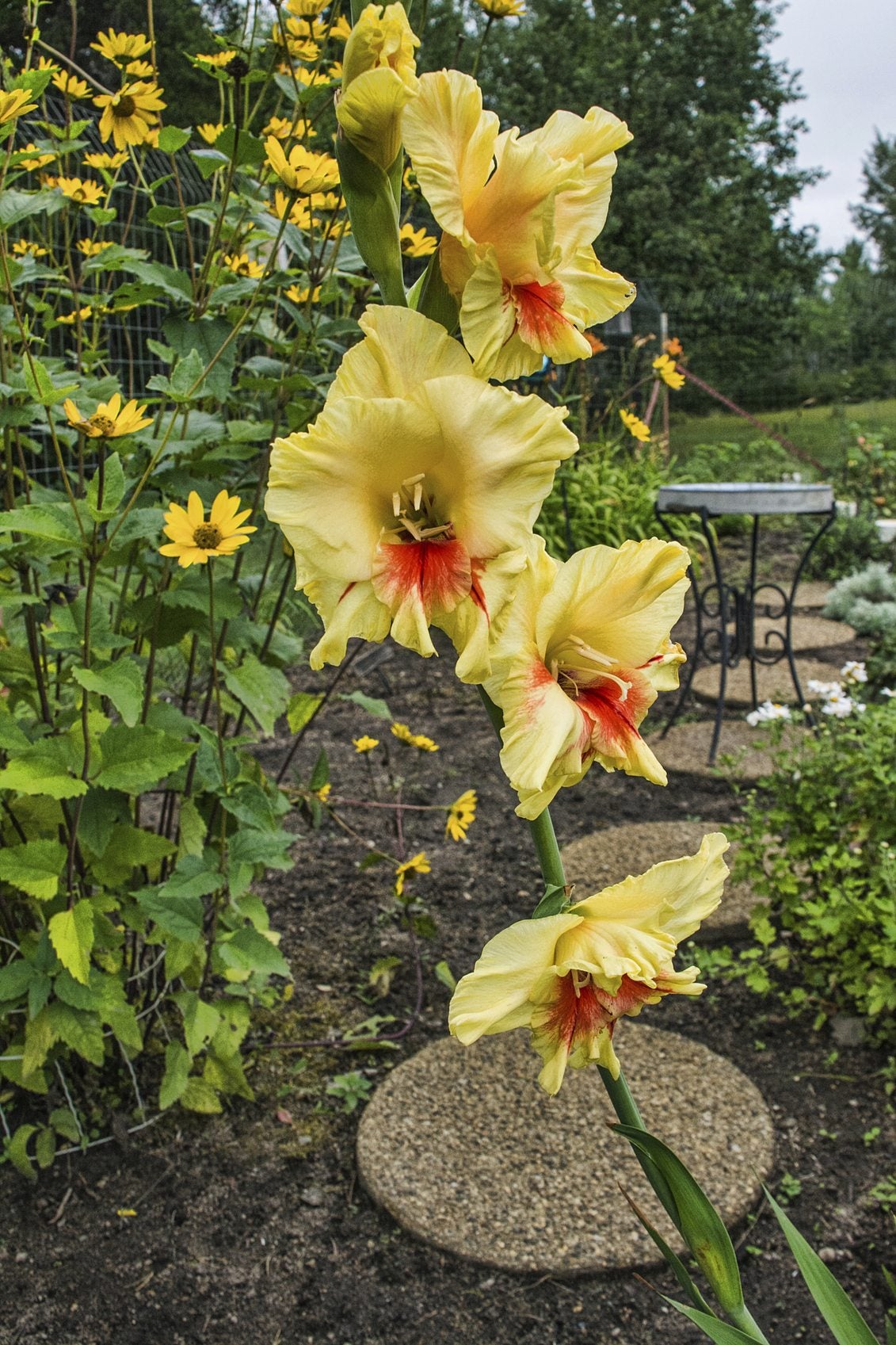Can I Grow Gladiolus In A Container: How To Care For Gladiolus Bulbs In Pots

Gladioli are beautiful plants, grown from corms or bulbs, and a favorite of many gardeners. They are perennials with striking flowers and tall, long stems that grow 2 to 6 feet (61 cm. to 2 m.) in height. Due to their height, many people often wonder if it's possible to have a gladiolus container garden.
Can I Grow Gladiolus in a Container?
If you are one of those interested in planting gladiolus in a container and want to know if this is possible, the resounding answer would be yes. Placing gladiolus bulbs in pots is a good idea where garden space is limited. All you need is to provide suitable drainage and growing conditions.
Growing Gladiolus in Pots
If you desire to grow gladiolus bulbs in pots, you will first need to choose a variety of glad types that you would like to plant. Growing smaller plants works best in a container because they are shorter and will have less of a chance to break as opposed the larger varieties.
If you do choose a larger variety, it will need to be staked for support. You will need a container that has drainage holes. If not, your glads will have wet feet and not grow as well. In fact, the corms will be more susceptible to rotting. The pot should be at least 12 inches (31 cm.) deep and 12 inches (31 cm.) in diameter.
The container needs to be deep enough for the bulb and have enough good quality potting soil to cover the bulb. The bulbs need to have 2 inches (5 cm.) of soil beneath them. Add some gravel to the bottom of the container to ensure the drainage of water. Gladiolus cannot sit in waterlogged soil.
Again, if this should happen, the bulb will rot. Plant bulbs 3 to 6 inches (8-15 cm.) deep and 2 to 3 inches (5-8 cm.) apart with the flat side down. Many growers plant gladiolus at two week intervals for continuous blooms. After you've planted your bulbs, water them generously. Soak the soil so that it settles around the bulb.
Caring for a Gladiolus Container Garden
Water the plants periodically. It is better to provide a good weekly soaking than to water them lightly two or three times a week. The roots and stems will appear shortly after their first watering. Once your flowers have started blooming, you can leave them on the plant or cut them to make a striking flower arrangement.
Gardening tips, videos, info and more delivered right to your inbox!
Sign up for the Gardening Know How newsletter today and receive a free copy of our e-book "How to Grow Delicious Tomatoes".
If you choose to leave the flower on the plant, cut off the dead head to guarantee continuous growth. When the flowers stop blooming, do not cut down the foliage. The leaves continue to produce food that is stored in the corm for the next year's season of flowers.
After the blossoms have faded, water the bulbs regularly. The leaves will start to turn yellow and brown and eventually dry up. When this happens, empty the pot. Recover the bulbs and allow the soil that sticks to them to dry. Remove dead foliage, brush off dry soil, and store the bulbs in a cool, dry place. They will be ready for the next year.
-
 Looking For Plants To Give You The Soft And Fuzzies? Try These 5 Fuzzy Leaf Plant Options
Looking For Plants To Give You The Soft And Fuzzies? Try These 5 Fuzzy Leaf Plant OptionsLovers of texture, drama, silver foliage and tactile plants will adore these special sensory garden additions. These fuzzy leaf plant options will leave you all aglow
By Susan Albert
-
 Get Ready For A Summer Of Hummers! Grow These Full Sun Hummingbird Plants and Flowers
Get Ready For A Summer Of Hummers! Grow These Full Sun Hummingbird Plants and FlowersIf you’re lucky enough to enjoy a sunny backyard, make sure you are maxing out on your pollinator opportunities and grow these full sun hummingbird plants and flowers
By Tonya Barnett
-
 Gladiolus Plants With Scab – Controlling Gladiolus Scab On Corms
Gladiolus Plants With Scab – Controlling Gladiolus Scab On CormsIf you are growing gladioli, you’ll want to know about gladiolus scab. For more information and tips on prevention and control, click here.
By Teo Spengler
-
Gladioli Mosaic Virus – Managing Symptoms Of Gladiolus Mosaic
Gladiolus blooms are featured in many cutting gardens for mid-summer bouquets. When issues like mosaic occur, this can naturally be alarming. Good cultural control can help prevent mosaic virus in gladiolus. Learn more in this article.
By Susan Albert
-
 Botrytis On Gladiolus Plants: How To Control Gladiolus Botrytis Blight
Botrytis On Gladiolus Plants: How To Control Gladiolus Botrytis BlightGladiolus botrytis diseases are not uncommon, so knowing the signs and how to manage them is important. Learn about gladiolus blight here.
By Mary Ellen Ellis
-
Treating Glads With Fusarium: How To Control Gladiolus Fusarium Rot
If the corms of your unplanted glads appear discolored and unhealthy, they may be infected with gladiolus fusarium rot. Learn more about fusarium wilt and rot on gladiolus plants in this article to see if your corms can be saved.
By Becca Badgett
-
Gladiolus Leaf Diseases: What Causes Leaf Spots On Gladiolus Plants
When kept healthy and disease free, gladiolus plants will return year after year. Issues like gladiolus leaf spot, however, may cause decline of your plants. Becoming familiar with the signs of gladiolus leaf diseases is important in preventing spread. Learn more here.
By Tonya Barnett
-
 Is Your Gladiolus Falling Over – How To Stake Glads In The Garden
Is Your Gladiolus Falling Over – How To Stake Glads In The GardenGrowing glads is so simple, but sometimes the tall gladiolus falling over in the garden can be troublesome, if not unattractive. Luckily, with a little added support, this can be easily remedied. Click this article for additional information.
By Mary H. Dyer
-
 Gladiolus Are Falling Over – Learn About Staking Gladiolus Plants
Gladiolus Are Falling Over – Learn About Staking Gladiolus PlantsProlific bloomers they are, but gladiolus plants falling over is not uncommon. Staking gladiolus plants will keep their brightly colored heads from dipping or breaking, and there are any number of items that can be used as gladiolus plant stakes. Learn more here.
By Amy Grant
-
 Companion Planting With Gladiolus: Plants That Grow Well With Gladiolus
Companion Planting With Gladiolus: Plants That Grow Well With GladiolusAs well as bouquets, gladiolus looks amazing in flower beds and along garden borders. But what are some good companion plants for gladiolus? Click this article to learn more about plants that grow well with gladiolus.
By Liz Baessler